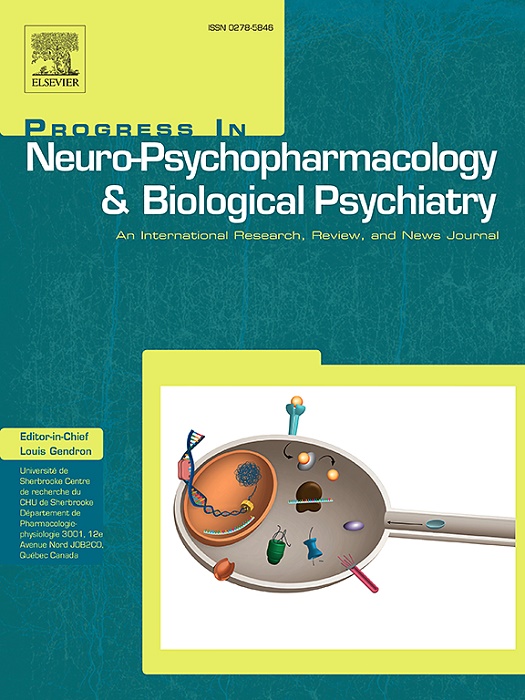Biological motion stimuli reveals the severity of the social deficits of ASD: an EEG study
IF 3.9
2区 医学
Q1 CLINICAL NEUROLOGY
Progress in Neuro-Psychopharmacology & Biological Psychiatry
Pub Date : 2025-10-02
DOI:10.1016/j.pnpbp.2025.111513
引用次数: 0
Abstract
The integration of individuals with autism spectrum disorder (ASD) into society and their capacity to lead fulfilling lives are significantly hindered by challenges in social communication. Consequently, it is crucial to explore the underlying neural mechanisms and establish early diagnostic approaches to accurately assess the severity of social interaction impairments in ASD. To investigate the social deficits in ASD, particularly in identifying reliable biomarkers for predicting the severity of social impairments, the current study focused on the sample entropy, functional connectivity, and network properties under biological motion tasks (biological motion (BM) and scramble motion (Scr) in both ASD and typically developing (TD) children. The findings suggest that, compared to TD, those with ASD exhibit higher sample entropy in localized brain regions, specifically the frontal and occipital lobes, regardless of whether they are under BM or Scr conditions. Moreover, ASD is characterized by enhanced long-range connectivity involving the frontal, parietal, and occipital lobes. These results collectively highlight the abnormal neural mechanisms of ASD when engaging with BM tasks, which further found a significant correlation between the network properties and the ADOS social score. Notably, by utilizing network properties and sample entropy as features, the severity of social impairments in autism can be effectively predicted through multiple stepwise regression analyses. These findings illuminate the pathophysiological mechanisms of ASD's social deficits from both local and global perspectives, offering potential biomarkers for quantifying social dysfunction in autism.
生物运动刺激揭示ASD社会缺陷的严重程度:一项脑电图研究。
自闭症谱系障碍(ASD)患者融入社会并过上充实生活的能力受到社会沟通挑战的严重阻碍。因此,探索潜在的神经机制和建立早期诊断方法以准确评估ASD中社会互动障碍的严重程度至关重要。为了研究ASD的社会缺陷,特别是寻找可靠的生物标志物来预测社会障碍的严重程度,目前的研究主要集中在ASD和典型发育(TD)儿童的生物运动任务(生物运动(BM)和scramble运动(Scr)下的样本熵、功能连通性和网络特性。研究结果表明,与TD相比,ASD患者在局部大脑区域,特别是额叶和枕叶中表现出更高的样本熵,无论他们是在BM还是Scr条件下。此外,ASD的特点是涉及额叶、顶叶和枕叶的远程连接增强。这些结果共同突出了ASD参与BM任务时异常的神经机制,进一步发现了网络属性与ADOS社会评分之间的显著相关性。值得注意的是,利用网络属性和样本熵作为特征,通过多元逐步回归分析可以有效地预测自闭症社交障碍的严重程度。这些发现从局部和全局角度阐明了ASD社会缺陷的病理生理机制,为量化自闭症社会功能障碍提供了潜在的生物标志物。
本文章由计算机程序翻译,如有差异,请以英文原文为准。
求助全文
约1分钟内获得全文
求助全文
来源期刊
CiteScore
12.00
自引率
1.80%
发文量
153
审稿时长
56 days
期刊介绍:
Progress in Neuro-Psychopharmacology & Biological Psychiatry is an international and multidisciplinary journal which aims to ensure the rapid publication of authoritative reviews and research papers dealing with experimental and clinical aspects of neuro-psychopharmacology and biological psychiatry. Issues of the journal are regularly devoted wholly in or in part to a topical subject.
Progress in Neuro-Psychopharmacology & Biological Psychiatry does not publish work on the actions of biological extracts unless the pharmacological active molecular substrate and/or specific receptor binding properties of the extract compounds are elucidated.

 求助内容:
求助内容: 应助结果提醒方式:
应助结果提醒方式:


